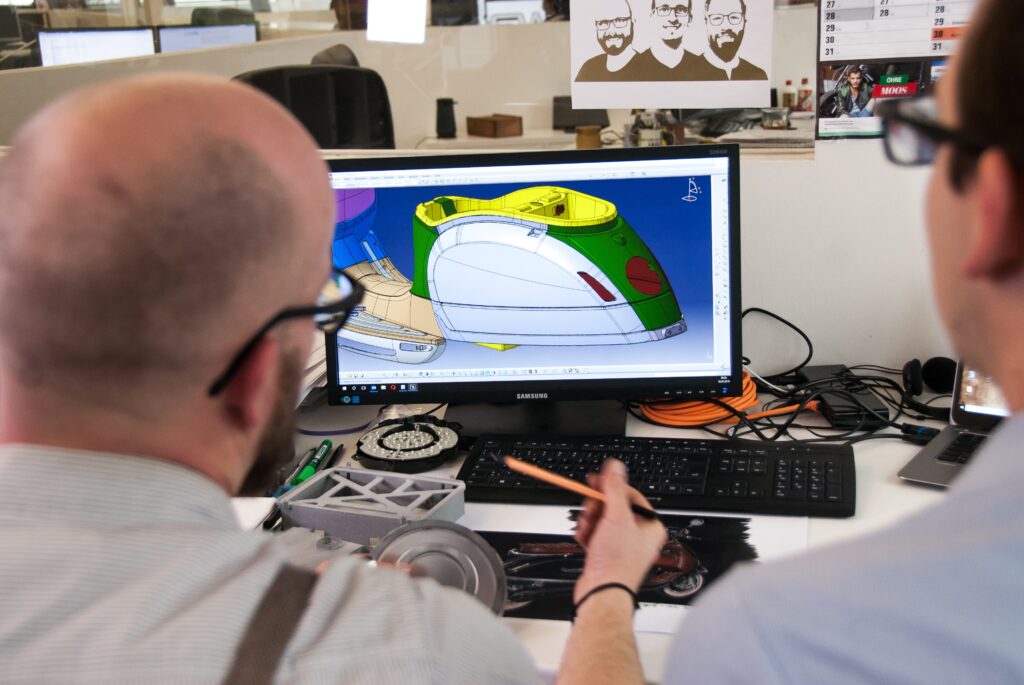
More and more professionals (as well as a non-negligible quantity of common people) are getting quite familiar with products like the 3D cad software and its countless fields of application. For those who are still not aware of what it is, we can say that it’s basically every designer’s best friend. It doesn’t matter if we’re talking about industrial design, fashion or architecture: a 3D CAD software has become, within the last decades, an irreplaceable work instrument, probably the one that has ferried the practice of design from a long-lasting analogical phase to the current digital era.
The acronym CAD stands for computer-aided design, and the definition speaks for itself. With the help of a software and its endless patterns (especially the most recent ones, that feature an extremely complex and exhaustive series of options and variables), a designer can have an immediate rendering of his/her project, the way it works and its reliability. He/she can also detect in real time any possible critical issue. With the introduction of 3D graphics, the CAD software products available on the market have taken a further step ahead, becoming much more than a simple design tool. Now they’re able to simulate the operation of complex systems, down to the smallest detail.
The introduction of CAD into the designers’ production process had an impact that we can hardly evaluate. To sum up positive effects that it implied, we have detected the five most important benefits that it has brought. They’re listed below,
1. Time saving. It’s clearly the easiest benefit to detect. Having a digital tool that, in a manner of speaking, does the dirty work for the designer, allows him/her to reduce remarkably the usual working time for each project. This means shorter delivery times and, hopefully, in the long period, more clients satisfied.
2. Money saving and earnings’ increasing. It is obviously related to the first point. The last consideration in particular (having the time to satisfy an increasing number of clients) leads automatically to a revenue growth. It’s kind of a natural process, that we can enclose under the term “efficiency”. On one side, a 3D CAD software allows the designer to optimize his/her physical and cognitive resources; and this can (or should) result in an improvement of his/her job in terms of quality. On the other hand, the improvement of the designer’s reputation should lead to an increase of the number of clients. So basically, all the workflow should receive a significant boost.
3. Focus on the creative part. When a properly set machine does the technical work, the designer can concentrate all his/her energy on being creative, different and unique, giving his/her projects an unmistakable touch. This is particularly important in those areas (fashion, architecture, but also, to some extent, industrial and mechanical design) where being creative, original and perfectly distinguishable, standing out from the competition and putting a sort of personal trademark in every project, are crucial points to become a top-notch professional, internationally recognized.
4. Accuracy and revision. As we said before, every project can be explored to the most minimal details. Moreover, the revision of the project itself is incorporated into the main functions of every 3D CAD software: basically, this means that there is no margin for error, since every project’s simulation comes out already cleansed from any possible mistake. That said, if the designer wants to make any adjustment at a later time, this is always possible and easy to do.
5. Productivity. Ultimately, we shouldn’t neglect the impact that a product like a 3D CAD software has had (and still has) on the profits of every company that works with it. Actually, every kind of software automation has had a positive impact on the job areas able to exploit their potential. But when we talk about design and engineering there is something more. The design world has been literally revolutionized by the introduction of software automation: the progress that 3D CAD has generated in this specific field is incomparable to any other. All of this has resulted in a productivity’s increasing as well as a quality enhancing. For example, in the latest years 3D CAD has been the protagonist of the relaunch of sectors such as fashion and architecture, which were at their very bottom after the pandemic and now are living a sort of second life.
